The Great War: 1914
- Thread starter enigmamcmxc
- Start date
-
We have updated our Community Code of Conduct. Please read through the new rules for the forum that are an integral part of Paradox Interactive’s User Agreement.
You are using an out of date browser. It may not display this or other websites correctly.
You should upgrade or use an alternative browser.
You should upgrade or use an alternative browser.
- Status
- Not open for further replies.
What's your war score up to now with the Russians, that many losses in battle must be telling? Of course they were annihilating you earlier in the war and probably rang up some big score then.
+30 something xD, thats over a 50 point change from my lowest point! I will post an accurate warscore soon.
Edit: +43 is the warscore.
Edit: +43 is the warscore.
Last edited:
The "Big Push"
On 1 August 1919 the broad front advance began. Every soldier on the northern and central fronts moved off to capture Moscow and the Russian capital St Petersburg, and everything between our border and these locations. In the south the main aim was to encircle and destroy the remaining Russian field army. In the Caucasus our forces aimed to control the ground they had moved into, destroy the small Russian garrison, and link up with the advance of the main force.
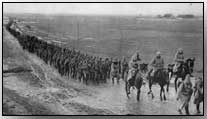
In only 23 days infantry, tanks, and guns had marched from the border and through the gates of Moscow. Twenty-four hours later, troops entered St Petersburg. With troops swarming all over Russia, the chief of the navy decided to launch the fleet on a mission to the Baltic to destroy the Russian main fleet; smaller squadrons were left behind to keep up the blockade of the Black Sea ports.
Towards the end of the month Egypt declared war on Crete, within a short timeframe Greece then ourselves were at war with Egypt. Ships were dispatched to blockade the Egyptian ports and within a few skirmishes their antiquated fleet was largely lost. On 12th October 14,000 men arrived in Cairo to tackle the Egyptian armed forces.
The Imperial Fleet having arrived in the North Sea moved to engage the Russian fleet only to find that the large number of Russian ships were transporters! In what was hoped to be the major engagement, fog allowed the Russians to escape. Our fleet then underwent a voyage to the Barents Sea hunting down these ships. Once again they escaped and once more the fleet moved on, this time to its original intended target of the Baltic. The fleet found its major engagement sinking the vast majority of Russian shipping, mopping up further by hunting down ships that attempted to flee to Finnish ports. The Imperial Fleet, its job done, then took up positions off the coast of St Petersburg.
On land, numerous provinces had fallen and men were released to advance even further east. However in the Ukraine the last major Russian field army refused to surrender or go down without a fight. They had, since the broad advance started, inflicted over 40,000 casualties upon our armed forces for the loss than half that figure.
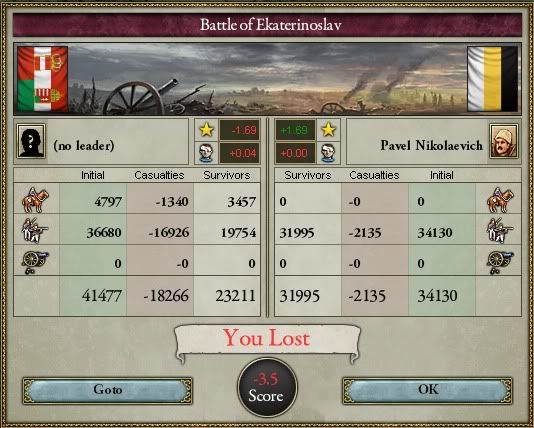
Just one in the series of battles with the remaining Russian field army that was punching above its weight
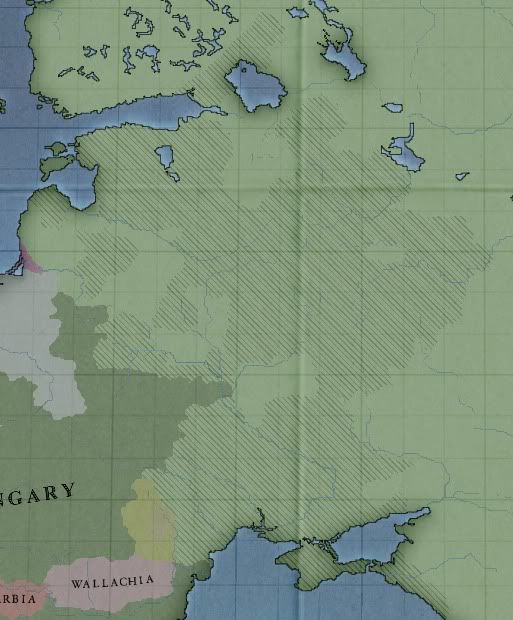
The occupied Russian provinces at the of 1919, of course does not show actual positions
On 1 August 1919 the broad front advance began. Every soldier on the northern and central fronts moved off to capture Moscow and the Russian capital St Petersburg, and everything between our border and these locations. In the south the main aim was to encircle and destroy the remaining Russian field army. In the Caucasus our forces aimed to control the ground they had moved into, destroy the small Russian garrison, and link up with the advance of the main force.

In only 23 days infantry, tanks, and guns had marched from the border and through the gates of Moscow. Twenty-four hours later, troops entered St Petersburg. With troops swarming all over Russia, the chief of the navy decided to launch the fleet on a mission to the Baltic to destroy the Russian main fleet; smaller squadrons were left behind to keep up the blockade of the Black Sea ports.
Towards the end of the month Egypt declared war on Crete, within a short timeframe Greece then ourselves were at war with Egypt. Ships were dispatched to blockade the Egyptian ports and within a few skirmishes their antiquated fleet was largely lost. On 12th October 14,000 men arrived in Cairo to tackle the Egyptian armed forces.
The Imperial Fleet having arrived in the North Sea moved to engage the Russian fleet only to find that the large number of Russian ships were transporters! In what was hoped to be the major engagement, fog allowed the Russians to escape. Our fleet then underwent a voyage to the Barents Sea hunting down these ships. Once again they escaped and once more the fleet moved on, this time to its original intended target of the Baltic. The fleet found its major engagement sinking the vast majority of Russian shipping, mopping up further by hunting down ships that attempted to flee to Finnish ports. The Imperial Fleet, its job done, then took up positions off the coast of St Petersburg.
On land, numerous provinces had fallen and men were released to advance even further east. However in the Ukraine the last major Russian field army refused to surrender or go down without a fight. They had, since the broad advance started, inflicted over 40,000 casualties upon our armed forces for the loss than half that figure.

Just one in the series of battles with the remaining Russian field army that was punching above its weight

The occupied Russian provinces at the of 1919, of course does not show actual positions
This is the end
The New Year of 1920 opened with the completion of the occupation of Moscow. However it also saw a small 12,00 strong uprising in the newly acquired provinces of southern Europe by “Bulgarian nationalists”; Turks unhappy with the defeat suffered by their empire rather than a nationalist movement and it was crushed within days.
In the Caucasus our troops were playing cat and mouse with the small Russian force, there being just too few men to capture ground as well as encircle and destroy them. After weeks of skirmishing and manoeuvring the Russian garrison was pinned down and encircled upon their own border, only to slip across the border into Persia.
During February our lead troops reached the Volga River, and at the end of the month also completed the occupation of St Petersburg. With more provinces falling under Austrian control the Russians sent a partial peace offer, attempting to end the war on their terms with the absolute minimum given up in return for peace; their offer was refused.
On 18 June troops entered the shadow of the Ural Mountains as other units bathed in the Caspian Sea. By July a continuous front had been created, all provinces behind the line cleared, and the last major Russian force destroyed. On 10 July the Russian diplomat in Prague met with the Prime Minister, offering the surrender of the Russian Empire and the acquiesce to our demands. The war was over!
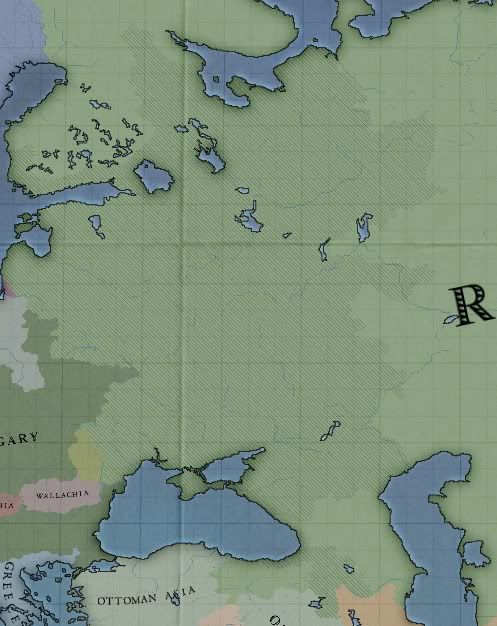
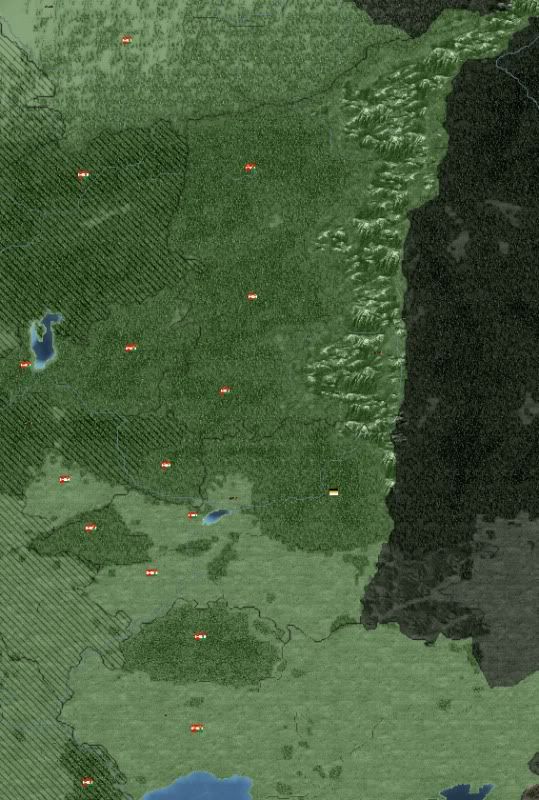
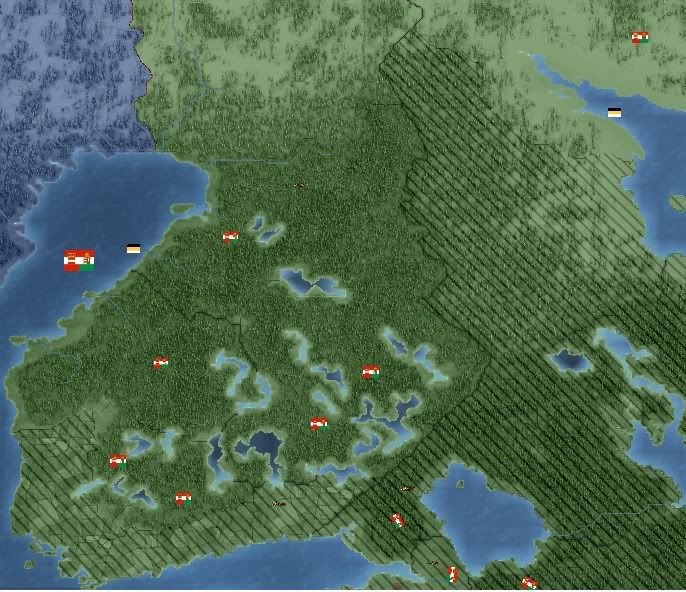
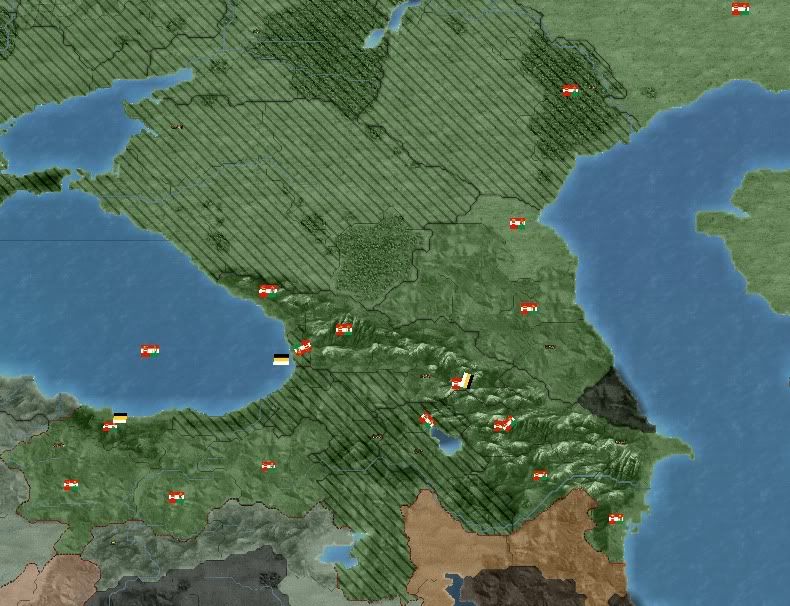
Austrian positions at the end of the war
The New Year of 1920 opened with the completion of the occupation of Moscow. However it also saw a small 12,00 strong uprising in the newly acquired provinces of southern Europe by “Bulgarian nationalists”; Turks unhappy with the defeat suffered by their empire rather than a nationalist movement and it was crushed within days.
In the Caucasus our troops were playing cat and mouse with the small Russian force, there being just too few men to capture ground as well as encircle and destroy them. After weeks of skirmishing and manoeuvring the Russian garrison was pinned down and encircled upon their own border, only to slip across the border into Persia.
During February our lead troops reached the Volga River, and at the end of the month also completed the occupation of St Petersburg. With more provinces falling under Austrian control the Russians sent a partial peace offer, attempting to end the war on their terms with the absolute minimum given up in return for peace; their offer was refused.
On 18 June troops entered the shadow of the Ural Mountains as other units bathed in the Caspian Sea. By July a continuous front had been created, all provinces behind the line cleared, and the last major Russian force destroyed. On 10 July the Russian diplomat in Prague met with the Prime Minister, offering the surrender of the Russian Empire and the acquiesce to our demands. The war was over!




Austrian positions at the end of the war
Hurray! Victory! 
What will happen to Russia now? Will Austria-Hungary liberate some of its oppressed constituent nations, or would that be taken to give the wrong ideas to minorities in A-H itself?
What will happen to Russia now? Will Austria-Hungary liberate some of its oppressed constituent nations, or would that be taken to give the wrong ideas to minorities in A-H itself?
I really hope there's some kind of land transfer done with Germany, Austro-German relations aren't exactly at a high but the border is soooooo ugly it makes me want to cry D:
Last edited:
Germany did goon enough, just take most of the Russian lands around the Black Sea, and free Lithuania as a border between Germany and Russia
Thanks for the comments guys. As soon as i get the chance i will post the final chapters showing what has happened since the end of the war.
An Austro-Germanic war/border change ... sounds like a neat idea for the Central Europe's dominant power.
An Austro-Germanic war/border change ... sounds like a neat idea for the Central Europe's dominant power.
Treaty of Brest-Litovsk
On 1 August 1919, several weeks following the Russian surrender, the peace between the Austrian and Russian Empires was formalised. The Treaty of Brest-Litovsk imposed a five-year truce upon both countries and further territory concessions upon the Russian Empire.
To protect our northern flank, the Russians were forced to give ground, and allow the people of Estonia and Latvia to rule by themselves. A further state was to be created, Lithuania, but there was no consent among the people. This left a Russian exclave to our north, and a prime target for future wars. A rump state, the Ukraine, was created to allow the oppressed peoples of that region to govern themselves and also to be create to shorten the future front with the Russians and provide an extra source of manpower to fight them.
In the north the people of Finland were given sovereignty to provide a buffer zone between Russia and their long-time allies of Sweden. Likewise in the south, three states were created to provide a buffer between the Russians and the Ottomans thus limiting Russian troop movement to reinforce the latter in the case of any future war.
Every move, every concession imposed upon the Russians was all to weaken their ability to wage war upon Austria in the future.
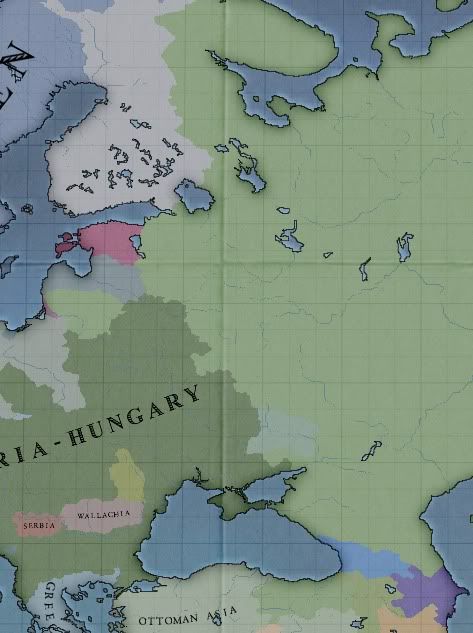
The new borders
On 1 August 1919, several weeks following the Russian surrender, the peace between the Austrian and Russian Empires was formalised. The Treaty of Brest-Litovsk imposed a five-year truce upon both countries and further territory concessions upon the Russian Empire.
To protect our northern flank, the Russians were forced to give ground, and allow the people of Estonia and Latvia to rule by themselves. A further state was to be created, Lithuania, but there was no consent among the people. This left a Russian exclave to our north, and a prime target for future wars. A rump state, the Ukraine, was created to allow the oppressed peoples of that region to govern themselves and also to be create to shorten the future front with the Russians and provide an extra source of manpower to fight them.
In the north the people of Finland were given sovereignty to provide a buffer zone between Russia and their long-time allies of Sweden. Likewise in the south, three states were created to provide a buffer between the Russians and the Ottomans thus limiting Russian troop movement to reinforce the latter in the case of any future war.
Every move, every concession imposed upon the Russians was all to weaken their ability to wage war upon Austria in the future.

The new borders
The price of victory
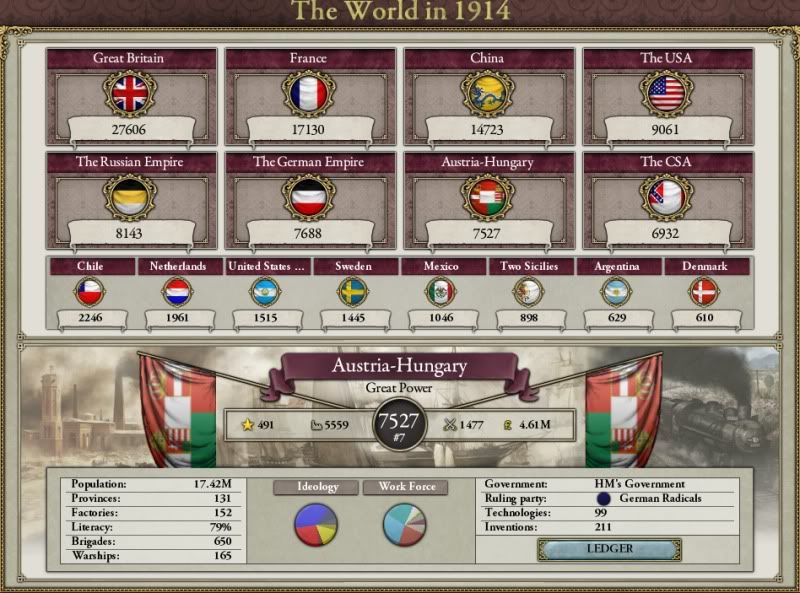
Following conscription, roughly 1.9 million men comprised the Austrian Army at the start of the war; by wars end, 2.2 million men had served in the army. During six years of war the army had suffered 1,528,057 killed and wounded, and a further 34,210 were captured. At the end of the war the army comprised of only 680,523 men, of whom 460,100 were within regular units; while some regular units had been raised during the war, the statistics hinted that it was the conscripts of the new army that had taken the brunt of the losses.
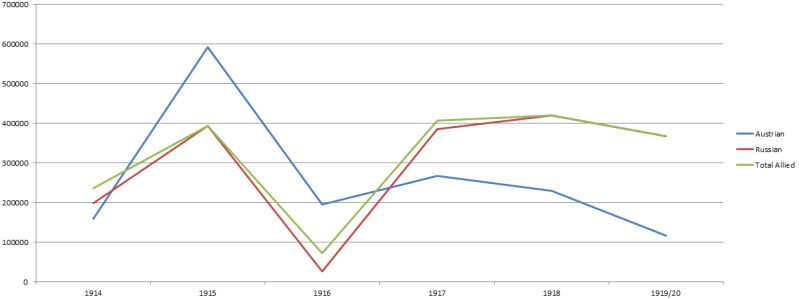
Austrian losses vs. those inflicted by Austrian forces upon her enemies
The war did not end with one side as the clear victors and another as the losers. 10 million men had been rendered casualties during the course of the war: 5,127,073 among the “Central Alliance” and the “Entente” 4,885,116.
Most losses, due to imperfect records kept by other countries, are only estimates based on various sources.

Central Alliance:
China: Anywhere between 1.9 and 2.2 million
Austria: 1,528,057 casualties and 34,210 captured
Germany: 1,250,000
Portuguese: 90,000
Italian allies: 78,986
Dutch: 70,000
Egypt: 60,000
Greece: 10,000
Krakow: 5,850
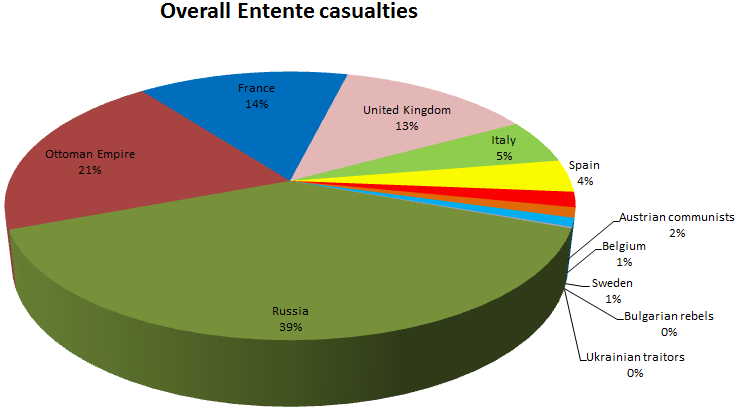
Entente:
Russia: 1,765,516 (1,464,516 inflicted by Austrian forces) and 325,498 captured by Austrian forces
Ottoman: 928,734
Estimated Ottoman military losses: 140,000
Ottoman Red Guard: 411,438
Ottoman Right-wing rebels: 98,848 + 36,196 captured
Ottoman anarchists: 242,252
France: 650,000
Britain: 600,000
Two Scillies: 244,315
Spain: 177,565
Austrian communists: 84,000
Belgian losses: 55,143
Sweden: 46,911
Bulgarian rebels: 6,000
Ukrainian traitors: 1,434
By end of July 1916: Entente ships losses around 150, possibly higher since losses would have been replaced. 1,461 (UK, French, Spain, Russians, Ottomans, and Italians.)
Central Powers fleet: 493 ships, represents the loss of around 400 ships most likely from Portuguese, Dutch, and German fleets.
Most of the major naval engagements were over by the end of 1916, the war then turning into smaller local conflicts and smaller ship on ship actions. Roughly 150 Entente ships had been sunk by this point, raising towards the 250-300 mark by the end of the war. Of the central alliance losses: 493 ships by the end of 1916, by the end of the war most of the German fleet had also been lost.
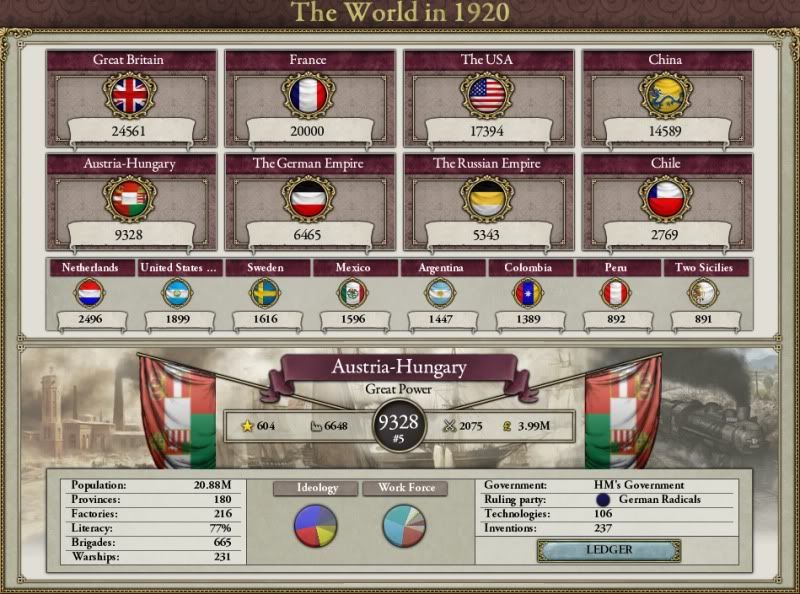

Following conscription, roughly 1.9 million men comprised the Austrian Army at the start of the war; by wars end, 2.2 million men had served in the army. During six years of war the army had suffered 1,528,057 killed and wounded, and a further 34,210 were captured. At the end of the war the army comprised of only 680,523 men, of whom 460,100 were within regular units; while some regular units had been raised during the war, the statistics hinted that it was the conscripts of the new army that had taken the brunt of the losses.

Austrian losses vs. those inflicted by Austrian forces upon her enemies
The war did not end with one side as the clear victors and another as the losers. 10 million men had been rendered casualties during the course of the war: 5,127,073 among the “Central Alliance” and the “Entente” 4,885,116.
Most losses, due to imperfect records kept by other countries, are only estimates based on various sources.

Central Alliance:
China: Anywhere between 1.9 and 2.2 million
Austria: 1,528,057 casualties and 34,210 captured
Germany: 1,250,000
Portuguese: 90,000
Italian allies: 78,986
Dutch: 70,000
Egypt: 60,000
Greece: 10,000
Krakow: 5,850

Entente:
Russia: 1,765,516 (1,464,516 inflicted by Austrian forces) and 325,498 captured by Austrian forces
Ottoman: 928,734
Estimated Ottoman military losses: 140,000
Ottoman Red Guard: 411,438
Ottoman Right-wing rebels: 98,848 + 36,196 captured
Ottoman anarchists: 242,252
France: 650,000
Britain: 600,000
Two Scillies: 244,315
Spain: 177,565
Austrian communists: 84,000
Belgian losses: 55,143
Sweden: 46,911
Bulgarian rebels: 6,000
Ukrainian traitors: 1,434
By end of July 1916: Entente ships losses around 150, possibly higher since losses would have been replaced. 1,461 (UK, French, Spain, Russians, Ottomans, and Italians.)
Central Powers fleet: 493 ships, represents the loss of around 400 ships most likely from Portuguese, Dutch, and German fleets.
Most of the major naval engagements were over by the end of 1916, the war then turning into smaller local conflicts and smaller ship on ship actions. Roughly 150 Entente ships had been sunk by this point, raising towards the 250-300 mark by the end of the war. Of the central alliance losses: 493 ships by the end of 1916, by the end of the war most of the German fleet had also been lost.

Final thoughts
After advancing across the Russian steppe for months, pushing the frontline of the Eastern Front to the boundaries of Asia, the Austrian Army returned home. Throughout the remainder of the summer months of 1920 columns of troops, guns, and tanks moved west. On 7 September the final troops crossed the border, and the next day the order to demobilise was given. The only force still fighting, was the “Egypt Expeditionary Force” (EEF); this small force would remain in Egypt for another 15 months attempting to prop up a “Minoan Empire” until the Egyptians and Crete came to terms by which time 2,176 Austrians had been killed while the EEF had inflicted 22,532 casualties and captured 3,000.
Following demobilisation the military began reorganising, a process that would take the best part of the following three years. The army was looking to reorganise into twenty armies and six ‘panzer korps’, a force totalling 848,000 men. As part of the reorganisation, all cavalry corps were stood down, numerous other cavalry and artillery units deactivated, with numerous orders made for additional armoured units and to expand the air force considerably. These changes saw some of the empire’s oldest units, dating from 1836, removed from the order of battle. Likewise the navy also undertook changes; the fleet was split into a main force, a “Baltic fleet”, and a “Hellespont fleet”. In addition 50 pre-dreadnoughts, numerous dreadnoughts, and cruisers were scrapped leaving the total strength of the navy at 70 dreadnoughts, and 70 cruisers.
The army, loyal and never having rebelled, did pose a problem for the government; fully 50 per cent of the armed forces were followers of socialism, an ideology throughly opposed by the government. Following six years of war, and two more of reorganisation, Austrians comprised 70 per cent of the rank and file of the army, Poles 5 per cent, and a multitude of other nationalities making up around three per cent each. In the coming years the Hungarian contingent should increase as more Hungarian regiments are formed to bring the army to full strength. The Officer Corp on the other hand was now 90 per cent Austrian, with Hungarians making up only three per cent. Within this Austrian Officer Corps plans were laid down for future wars with the Russians aimed at seizing Lithuania; there was talk of seizing the Rumanian provinces, Serbia, and Montenegro; while a militant faction talked of war with Germany to seize the Polish regions.
These changes had a dramatic effect on the economy, allowing tariffs to be lowered and industrial plants expanded. It took some time, but various lagging industries eventually started to pick up again and a depression avoided. In the newly found territories a massive infrastructure programme was launched, and an effort to increase the administration efficiency. In 1922, the country was picked to once again host the Olympic Games.
Outside of the Empire, European tensions rose at the end of the war as the French and Dutch mobilised their forces but nothing developed from this. The Rumanian attempt to develop itself as a regional power was thwarted, leaving three weak powers surrounded by the Austrian Empire. Internationally, the Americans were able to simultaneously defeat the British, Canadians, and Japanese. The Ottoman Empire, attacked from all directions, was able to defeat her neighbours, securing her central empire and expanded it; however her war against the British (British troops were granted permission by both Austria and Russia to move through their territories to attack the Ottomans) was another story. Cyprus was lost, or freed deprending on whose side you support however the the Ottomans were able to hold Iraq, the other goal of the British.
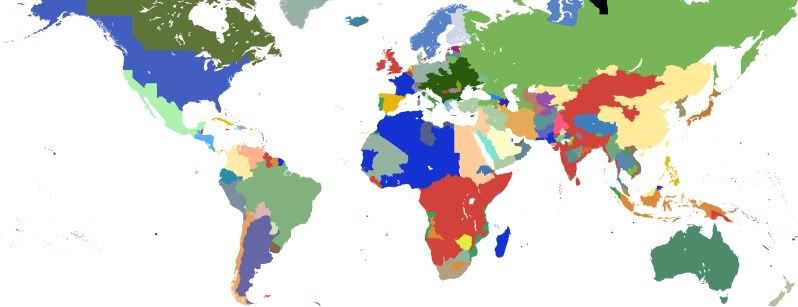
The world of 1922: peace has settled across the planet. The Great War, and the wars that followed in its wake, having ended.
After advancing across the Russian steppe for months, pushing the frontline of the Eastern Front to the boundaries of Asia, the Austrian Army returned home. Throughout the remainder of the summer months of 1920 columns of troops, guns, and tanks moved west. On 7 September the final troops crossed the border, and the next day the order to demobilise was given. The only force still fighting, was the “Egypt Expeditionary Force” (EEF); this small force would remain in Egypt for another 15 months attempting to prop up a “Minoan Empire” until the Egyptians and Crete came to terms by which time 2,176 Austrians had been killed while the EEF had inflicted 22,532 casualties and captured 3,000.
Following demobilisation the military began reorganising, a process that would take the best part of the following three years. The army was looking to reorganise into twenty armies and six ‘panzer korps’, a force totalling 848,000 men. As part of the reorganisation, all cavalry corps were stood down, numerous other cavalry and artillery units deactivated, with numerous orders made for additional armoured units and to expand the air force considerably. These changes saw some of the empire’s oldest units, dating from 1836, removed from the order of battle. Likewise the navy also undertook changes; the fleet was split into a main force, a “Baltic fleet”, and a “Hellespont fleet”. In addition 50 pre-dreadnoughts, numerous dreadnoughts, and cruisers were scrapped leaving the total strength of the navy at 70 dreadnoughts, and 70 cruisers.
The army, loyal and never having rebelled, did pose a problem for the government; fully 50 per cent of the armed forces were followers of socialism, an ideology throughly opposed by the government. Following six years of war, and two more of reorganisation, Austrians comprised 70 per cent of the rank and file of the army, Poles 5 per cent, and a multitude of other nationalities making up around three per cent each. In the coming years the Hungarian contingent should increase as more Hungarian regiments are formed to bring the army to full strength. The Officer Corp on the other hand was now 90 per cent Austrian, with Hungarians making up only three per cent. Within this Austrian Officer Corps plans were laid down for future wars with the Russians aimed at seizing Lithuania; there was talk of seizing the Rumanian provinces, Serbia, and Montenegro; while a militant faction talked of war with Germany to seize the Polish regions.
These changes had a dramatic effect on the economy, allowing tariffs to be lowered and industrial plants expanded. It took some time, but various lagging industries eventually started to pick up again and a depression avoided. In the newly found territories a massive infrastructure programme was launched, and an effort to increase the administration efficiency. In 1922, the country was picked to once again host the Olympic Games.
Outside of the Empire, European tensions rose at the end of the war as the French and Dutch mobilised their forces but nothing developed from this. The Rumanian attempt to develop itself as a regional power was thwarted, leaving three weak powers surrounded by the Austrian Empire. Internationally, the Americans were able to simultaneously defeat the British, Canadians, and Japanese. The Ottoman Empire, attacked from all directions, was able to defeat her neighbours, securing her central empire and expanded it; however her war against the British (British troops were granted permission by both Austria and Russia to move through their territories to attack the Ottomans) was another story. Cyprus was lost, or freed deprending on whose side you support however the the Ottomans were able to hold Iraq, the other goal of the British.

The world of 1922: peace has settled across the planet. The Great War, and the wars that followed in its wake, having ended.
Epic.
Looking at the 1914 and 1920 scores, it's apparent that the big winner of this war was the USA...
Looking at the 1914 and 1920 scores, it's apparent that the big winner of this war was the USA...
Just like in real life? :laugh:
The USA AI was able to finally defeat the CSA after half a century of fighting, then go onto capture territory from Canada and the UK, repulse a Japanese attack and from what i can gather (having not really kept track of the scores) humiliated the British AI (not literally as the US didnt have a war goal other than stauts quo). It would appear that over the course of the game it has moved from a weak power unable to defeat the CSA into a fully fledged member of the superpowers.
Thanks for the comments
The USA AI was able to finally defeat the CSA after half a century of fighting, then go onto capture territory from Canada and the UK, repulse a Japanese attack and from what i can gather (having not really kept track of the scores) humiliated the British AI (not literally as the US didnt have a war goal other than stauts quo). It would appear that over the course of the game it has moved from a weak power unable to defeat the CSA into a fully fledged member of the superpowers.
Thanks for the comments
Great AAR
But a few question, is that an independent Tripoli and South Africa? And who are the orange (western coast cut-off from the sea by Portugal) and yellow blobs in Africa?
But a few question, is that an independent Tripoli and South Africa? And who are the orange (western coast cut-off from the sea by Portugal) and yellow blobs in Africa?
Thanks 
Both Tripolitania (Tuscan war goal) and Cyrenaica (my doing) are part of Tuscany. Yes there is an independant South Africa (my doing). Unsure about the orange blob, i will check that out later. The yellow blob is an independent Rhodisa (my doing).
Edit: Those orange blobs on the eastern side of Africa ... is the Dutch Empire???
Both Tripolitania (Tuscan war goal) and Cyrenaica (my doing) are part of Tuscany. Yes there is an independant South Africa (my doing). Unsure about the orange blob, i will check that out later. The yellow blob is an independent Rhodisa (my doing).
Edit: Those orange blobs on the eastern side of Africa ... is the Dutch Empire???
Last edited:
Epic.
Looking at the 1914 and 1920 scores, it's apparent that the big winner of this war was the USA...
I second both these statements.
That really is an astronomically epic win for the US. Completely annihilating one GP, and then proceeding to kick the the biggest right where it hurts.
LOL
Can Vic2 saves be transferred to HOI3? If they can, i guess i might. ill have to see if my HOI3 game works on the laptop thought, no time for the PC no more.
Can Vic2 saves be transferred to HOI3? If they can, i guess i might. ill have to see if my HOI3 game works on the laptop thought, no time for the PC no more.
LOL
Can Vic2 saves be transferred to HOI3? If they can, i guess i might. ill have to see if my HOI3 game works on the laptop thought, no time for the PC no more.
I once heard of a convertor for Vic2 saves to be converted over to HOI3, but I'm not sure if it works. All I know is that the convertor for EU3 to Vic2 does work.
- Status
- Not open for further replies.

